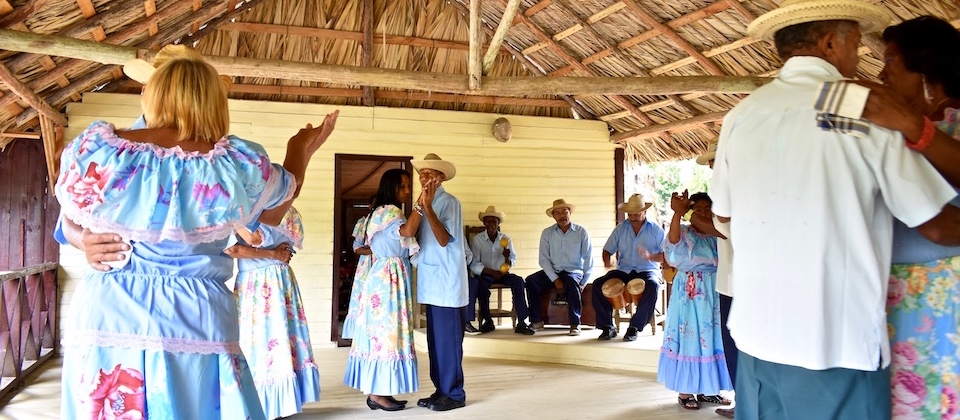
Published on 18 February, 2018.
Are you passionate about traditional Cuban music? Then you probably know that Cuban salsa evolved from Eastern Cuba’s son (the son oriental). And that the son oriental and the changüí guantanamero stem from the roots of Baracoa’s nengón and kiribá.
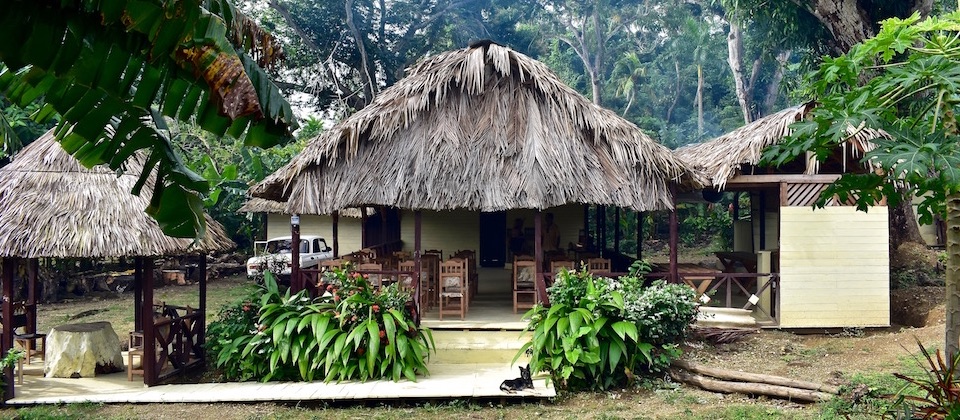
Only a visit to Baracoa will allow you to get to know the people that preserve nengón and kiribá every day. At El Güirito rural community you will experience first-hand and enjoy these ancestral rhythms.
El Güirito, a small community with unique traditions
You can reach El Güirito after a 17 km trip from Baracoa. The trip can be done by car or bicycle. On the road you’ll take in delightful rural Cuban panoramic views – green valleys & peasant farms, palm trees, coconut trees and other fruit trees…
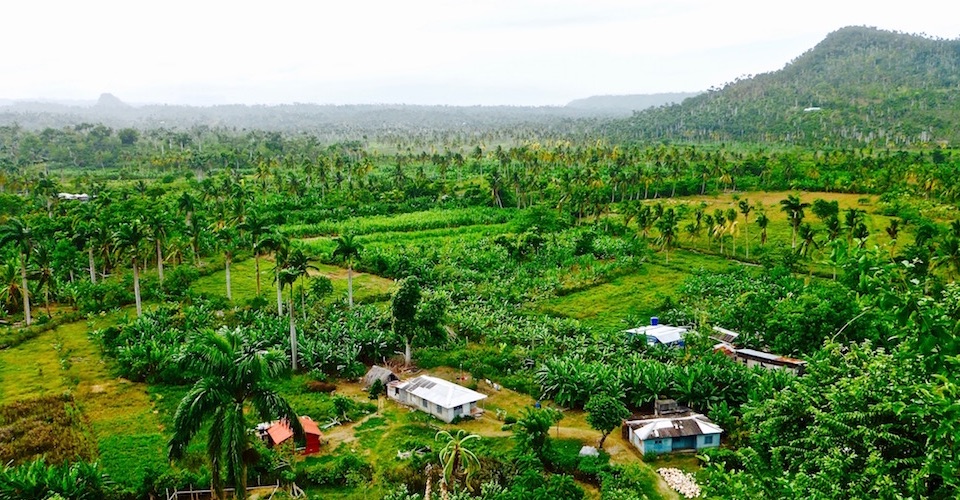
El Güirito is often associated to cacao and chocolate, but it is also the bearer of culinary traditions that go back as far as the Taino pre-Columbian people. In time and history, a mestizo or creole cuisine has flourished, offering delicious dishes such as the bacán – a sort of tamal made with plantain, coconut milk, annatto and other spices and stuffed with crab or pork meat.
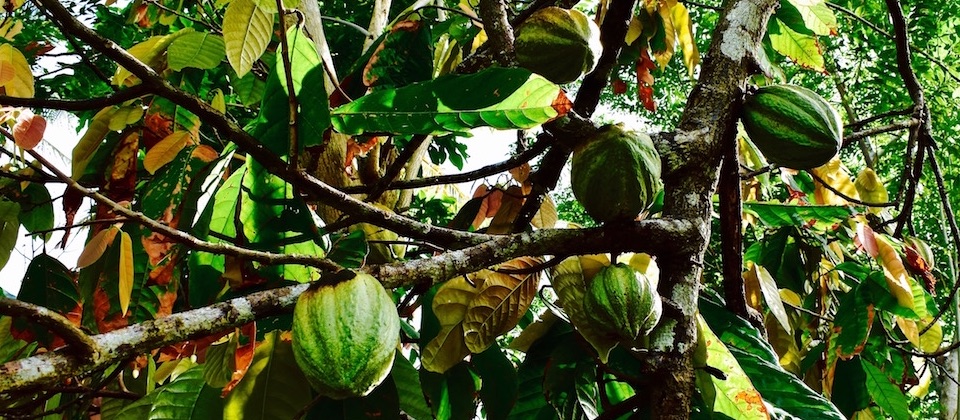
The nengón and kiribá tradition was already part of these lands at the time of the fight for Cuba’s independence during the second half of the 19th century. The mambises (fighters with the liberation army) danced to these rhythms whenever the war allowed for a celebration to take place.
Preserving nengón and kiribá
The Baracoa region as well as the Easternmost area of the province of Guantanamo synthesize indigenous, African and European influences. A wide range of rhythms have been born here, between the mountains and the sea over the centuries.
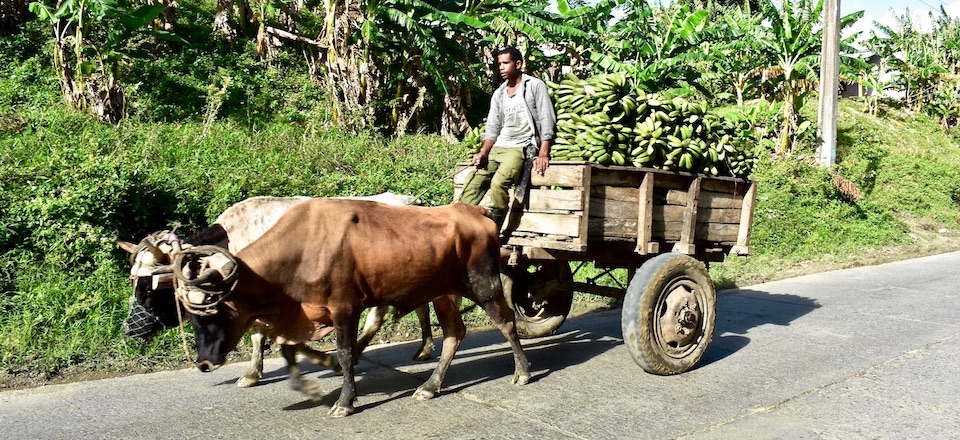
The nengón and the kiribá are musical and dance expressions rooted in Baracoa’s traditional peasant festivities. Facing loud and ubiquitous modern musical forms and local youth’s migration to larger urban centres, El Güirito dwellers have taken on the mission of cultivating, passing on and ensuring the survival of their traditions.
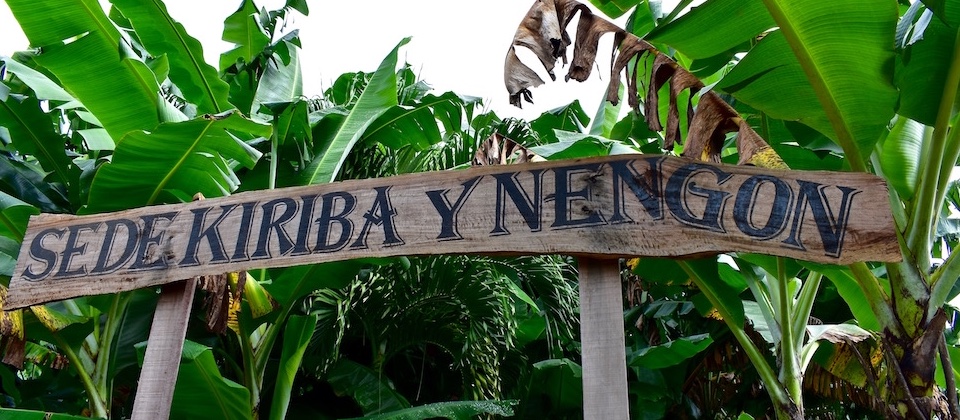
Tereza Roché, the director of El Güirito’s music & dance group, is a living cultural treasure in Baracoa. With the support of Cuba’s cultural institutions, Tereza and the members of the group preserve this musical legacy, ensuring its transmission by working with children and youth: the “kiribasitos” (or little kiribas).
A peasant party at El Güirito
Peasant parties are prepared early during the day. The El Güirito community welcomes Cuban or foreign invitees from time to time, and they begin preparing everything in the morning in view of offering a roasted pork, done the traditional peasant manner. This takes some 4 hours of slow, patient and dedicated roasting. Not just anyone can do it properly…
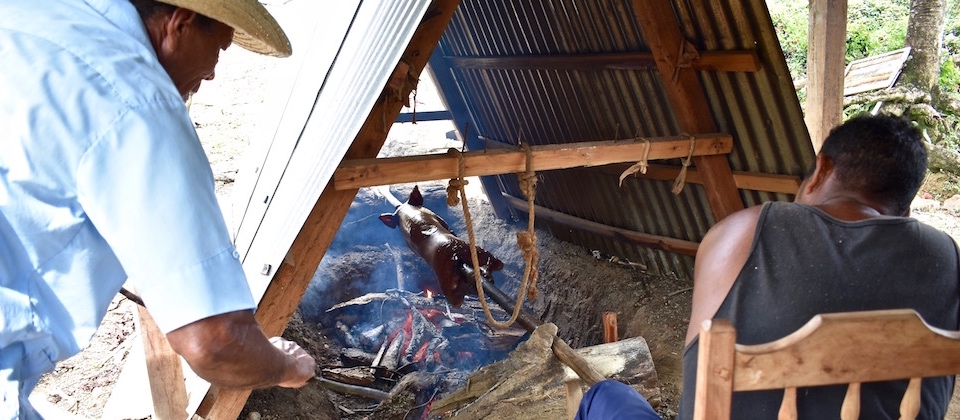
Local families bring each a traditional dish. Throughout the morning they arrive, smiling and joyful, with a wide range of delicacies to please their invitees.
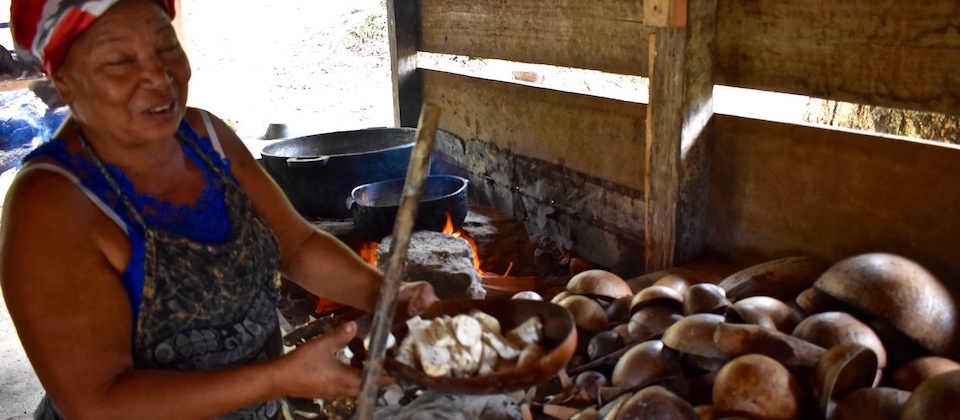
The musicians too arrive and start playing the typical instruments used in nengón and kiribá –the guayo, the maracas, the marímbula, the bongó and the tres. Little by little you start hearing these ancient and seminal forms of Cuba’s son oriental musical constellation.
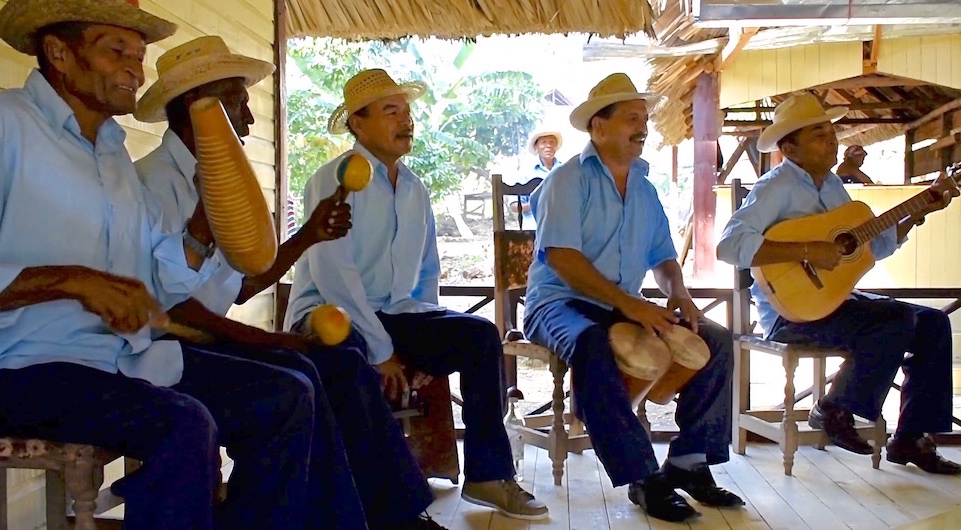
Welcome to the “fiesta del nengón y el kiribá”!
After a few warm opening words by Tereza, the musicians launch the party with a classic nengón. The voices interact following a lead-versus-choir pattern: “¡Pero báilalo / para ti, nengón! / ¡Pero gózalo / para ti, nengón!”
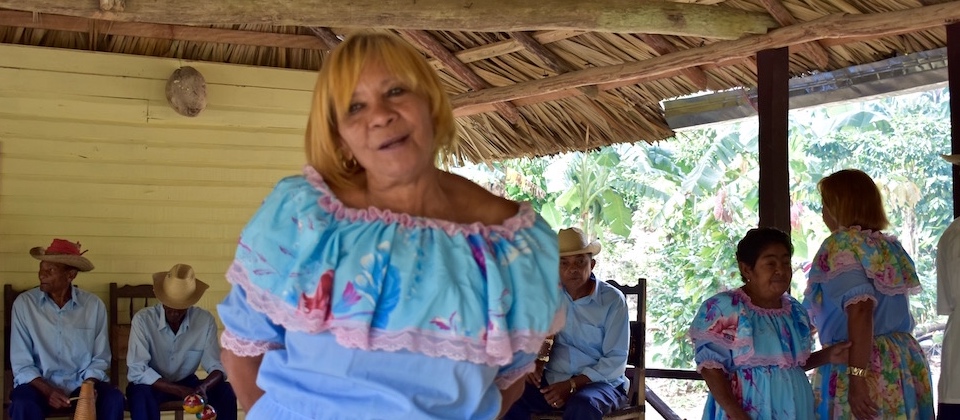
The couples’ cadence sees them cover the dance floor describing a circle, while the women’s steps suggest the movement of the feet sliding cacao beans drying on the floor.
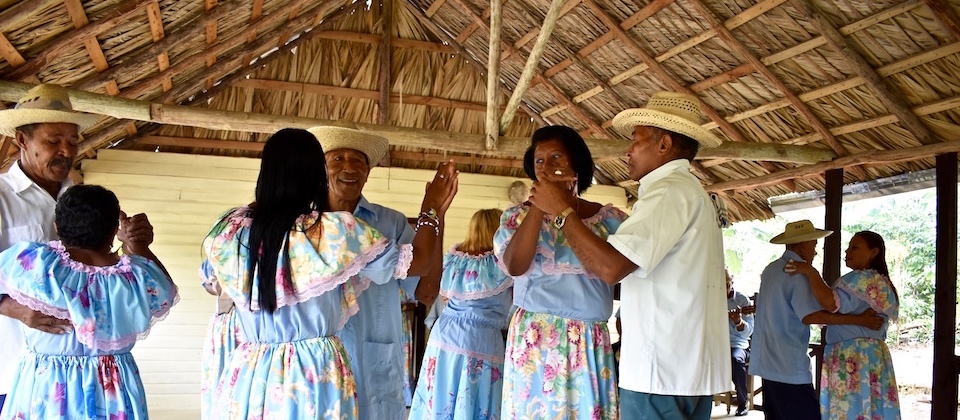
Both nengón and kiribá feature lyrics in the form of bucolic verses. Take for for instance this kiribá, which also alternates choir & lead voices: “Kiribá, kiribá! / I am leaving for the mountains. / Kiribá, kiribá! / And I’m really in no hurry. / Kiribá, kiribá! / Take my smile as a gift. / Kiribá, kiribá! / Cause there’s no way you can fool me.”
Soon the dancers start inviting visitors to join in the dance and thus the party goes on, carried by the joyfulness of local and travelers together.
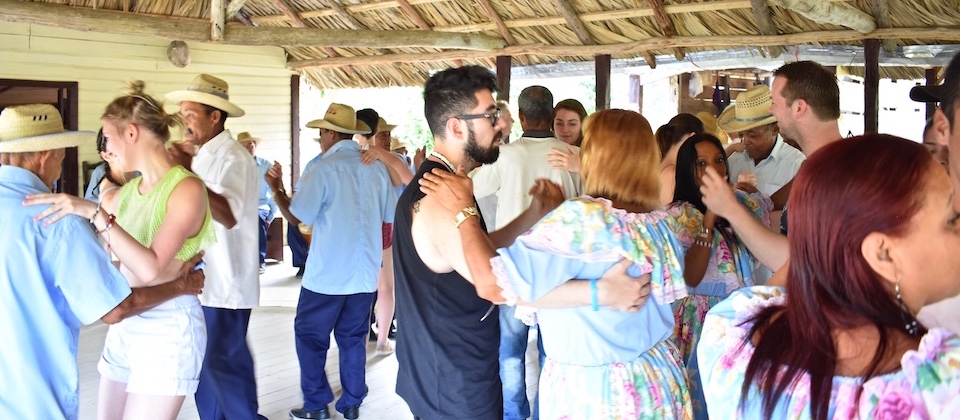
The region’s typical dishes and the Taino heritage
You can certainly try our region’s typical dishes in the town of Baracoa and other places around it, but at the nengón and kiribá venue you’ll taste a variety and an authenticity you won’t find in the restaurants where travellers usually eat.
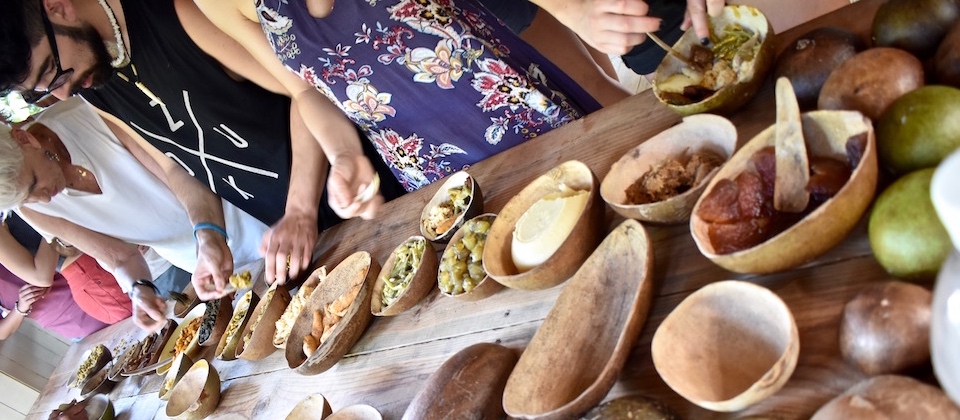
The main ingredients in these dishes include coconut oil and milk, annatto, cilantro and other spices that compliment various types of veggies such as root vegetables, beans and greens, as well as fish and crab. Here you can also taste chorote, a traditional drink made out of cacao, coconut milk and thickened with plantain flour.
The future – Intangible Cultural World Heritage?
Throughout the years, the El Güirito nengón and kiribá group has received numerous awards. It has received the Memoria Viva (Living Heritage) award from the Cuban Institute for Cultural Research and the Premio Nacional de Cultura Comunitaria (National Community Culture Prize).
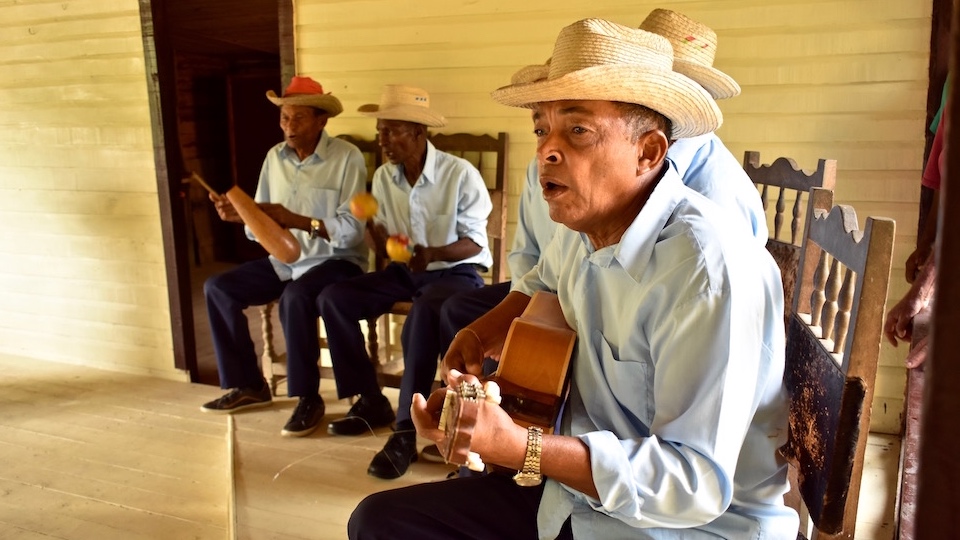
Tereza Roché shares with visitors that El Güirito group and the Cuban cultural authorities are currently working towards getting UNESCO to designate nengón and kiribá as forms of the intangible cultural world heritage. We hope that this well-deserved recognition will come soon to this unique community and its beautiful living culture.
Practical information and budget details
- Performances at the nengón and kiribá venue are of two kinds. On the one hand, they can take place in the context of an organized cultural exchange or group visit. On the other hand, each Saturday the group offers an open session – visitors can show up without previous notice.
- Saturdays’ open sessions usually start at 3:00 p.m., but it is always good to check the schedule in the morning or a day in advance, in case there is a change.
- The organized cultural exchanges or group visits must be planned for in advance, through the group’s director, Tereza Roché.
- The form of these events varies as well. The Saturday opens spaces last for about 2 hours and they include music, dance and an invitation for visitors to join in and enjoy the dance. For their part, the organized cultural exchanges or group visits take the form of a peasant party starting early in the afternoon and lasting for a few hours. These include the region’s traditional dishes, as well as a roasted pork done in the traditional peasant style.
- You can reach El Güirito in several ways. A taxi for the day may cost between 25 and 30 CUC, depending on what other activities/visits you include in your excursion. A visit to the nengón and kiribá group at El Güirito may be combined with a visit to the Las Mujeres cacao farm, or the Cueva del Cacique archaeological site, or with Cajuajo beach, or El Manglito beach or the Yumuri Canyon.
- You can also reach the nengón and kiribá venue by bicycle. El Güirito lies roughly 17 km away from Baracoa. You arrive there via a paved road, with the final 500 meters on a rural dirt road. Renting a good bicycle for the day in Baracoa costs 6 CUC. Villa Paradiso offers its guests complimentary cycling maps for this and other excursions. We invite you to learn more about cyclotourism and sustainable tourism in the Baracoa region.
Activities, Baracoa, Sustainable Tourism
Tags: Culture, Cyclotourism, History, Music

Leave a Reply